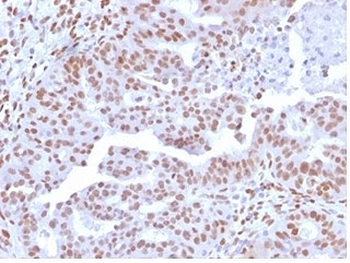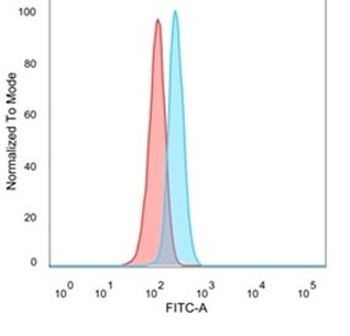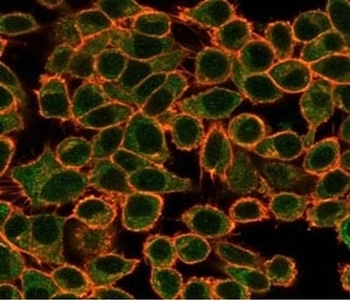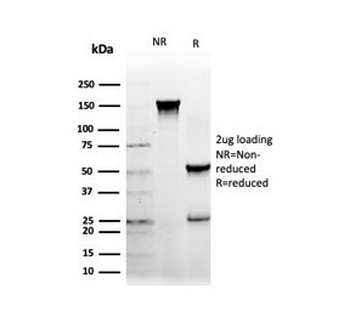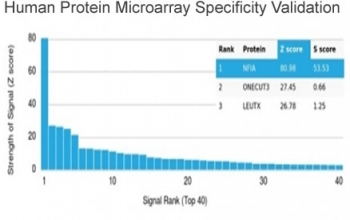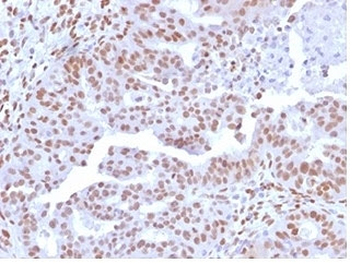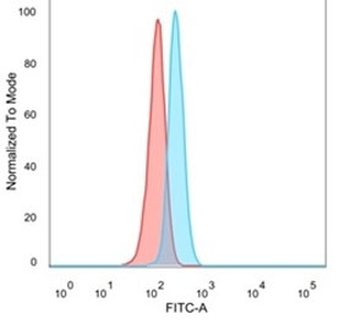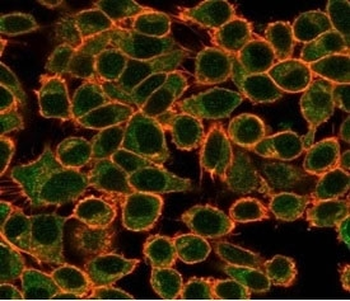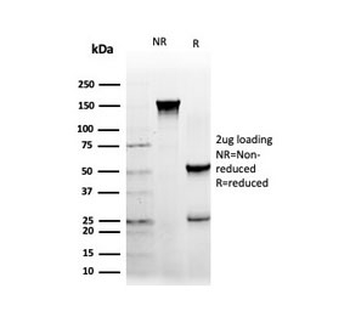You have no items in your shopping cart.
NFIA Antibody / Nuclear Factor 1 A
Catalog Number: orb2634962
| Catalog Number | orb2634962 |
|---|---|
| Category | Antibodies |
| Description | Nuclear factor (NF) proteins are a family of CCAAT-box-binding proteins that stimulate DNA replication and activate transcription. Analysis of human NF-1 messenger RNA has revealed two forms of the NF-1 protein arising from an alternate splicing of a single NF-1 gene. NF-1 binds its consensus DNA element as a homodimer via an amino-terminal DNA-binding domain, and activates transcription through a putatively novel, proline-rich, carboxy-terminal transactivation domain. The NF-1 protein has been shown to recognize and bind the adenovirus type 2 promoter and activate transcription of herpes simplex virus thymidine kinase genes. The NF-1 consensus element has been found in the upstream promoter region of myriad eukaryotic genes, including that of Ha-Ras, -globin, HSP 70, GRP 78, Histone H1, myelin basic protein and in the Xenopus laevis vitellogenin gene promoter. |
| Species/Host | Mouse |
| Clonality | Monoclonal |
| Clone Number | PCRP-NFIA-2C6 |
| Tested applications | FACS, IF, IHC-P, WB |
| Reactivity | Human |
| Isotype | Mouse IgG2c |
| Immunogen | A recombinant protein fragment was used as the immunogen for the NFIA antibody. |
| Dilution range | Flow cytometry: 1-2ug/million cells,Immunofluorescence: 1-2ug/ml,Western blot: 1-2ug/ml,Immunohistochemistry (FFPE): 1-2ug/ml |
| Conjugation | Unconjugated |
| Formula | 0.2 mg/ml in 1X PBS with 0.1 mg/ml BSA (US sourced), 0.05% sodium azide |
| Hazard Information | This NFIA antibody is available for research use only. |
| UniProt ID | Q12857 |
| Storage | Maintain refrigerated at 2-8°C for up to 2 weeks. For long term storage store at -20°C in small aliquots to prevent freeze-thaw cycles. |
| Note | For research use only |
| Application notes | Optimal dilution of the NFIA antibody should be determined by the researcher. |
| Expiration Date | 12 months from date of receipt. |

IHC staining of FFPE human lung tissue with NFIA antibody (clone PCRP-NFIA-2C6). HIER: boil tissue sections in pH9 10mM Tris with 1mM EDTA for 20 min and allow to cool before testing.
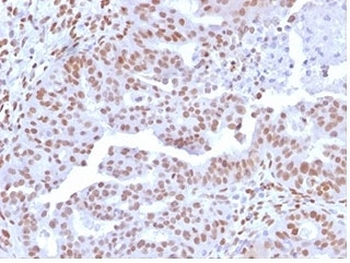
IHC staining of FFPE human colon carcinoma tissue with NFIA antibody (clone PCRP-NFIA-2C6). HIER: boil tissue sections in pH9 10mM Tris with 1mM EDTA for 20 min and allow to cool before testing.
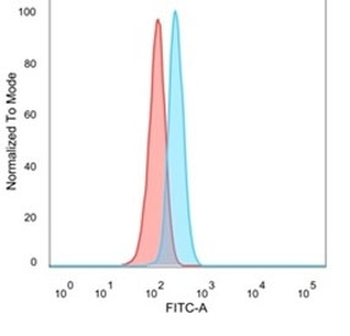
FACS staining of PFA-fixed human HeLa cells with NFIA antibody (blue, clone PCRP-NFIA-2C6) and isotype control (red).
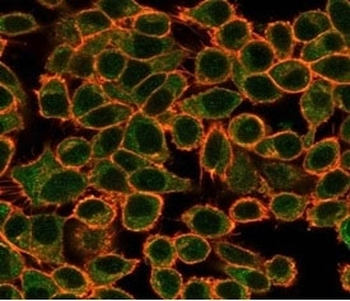
Immunofluorescent staining of PFA-fixed human HeLa cells using NFIA antibody (green, clone PCRP-NFIA-2C6) and phalloidin (red).
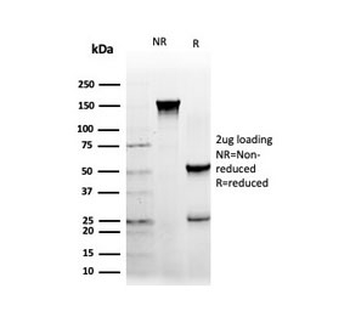
SDS-PAGE analysis of purified, BSA-free NFIA antibody (clone PCRP-NFIA-2C6) as confirmation of integrity and purity.
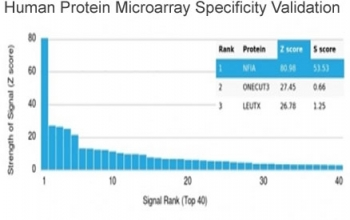
Analysis of HuProt (TM) microarray containing more than 19000 full-length human proteins using NFIA antibody (clone PCRP-NFIA-2C6). These results demonstrate the foremost specificity of the PCRP-NFIA-2C6 mAb. Z- and S- score: The Z-score represents the strength of a signal that an antibody (in combination with a fluorescently-tagged anti-IgG secondary Ab) produces when binding to a particular protein on the HuProt (TM) array. Z-scores are described in units of standard deviations (SD's) above the mean value of all signals generated on that array. If the targets on the HuProt (TM) are arranged in descending order of the Z-score, the S-score is the difference (also in units of SD's) between the Z-scores. The S-score therefore represents the relative target specificity of an Ab to its intended target.
NFIA Antibody / Nuclear Factor 1 A [orb2634961]
FACS, IF, IHC-P, WB
Human
Mouse
Monoclonal
Unconjugated
100 μgNFIA Antibody / Nuclear Factor 1 A [orb2634963]
FACS, IF, IHC-P, WB
Human
Mouse
Monoclonal
Unconjugated
100 μg



